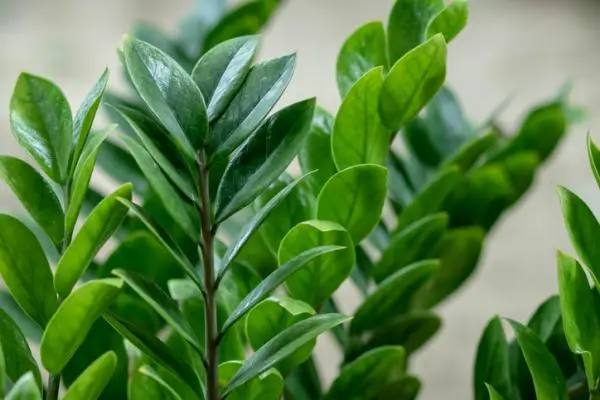When it comes to easy-care indoor plants, there is a tropical one that we cannot overlook: the zamioculca ( Zamioculcas zamiifolia ), which in some countries is also called the fortune plant .
It is a very striking species, with very striking leaves and stems and highly appreciated both for its interior decoration capacity and its extraordinary resistance. If you want to learn more about how to take care of a zamioculca, keep reading us in this article in which we show you a practical and complete guide on caring for a zamioculca .
Characteristics of the zamioculca
Scientific name Zamioculcas zamiifolia , this tropical plant native to Africa is very suitable for beginners gardening enthusiasts or for those who have little time to care for their plants. Here we start talking about its characteristics:
- The zamioculca plant owes its particular appearance to its ability to accumulate water in its leaves and fleshy stems , which act as a reserve in case of drought, making it a succulent plant.
- It is a perennial plant, which in its original habitat reaches heights of up to 1 meter , although in pot and indoors it usually stays somewhat below this height.
- The zamioculca flower has very little ornamental value, since it is small inflorescences of a very inconspicuous yellow tone, so it is a species mainly appreciated as a green plant .
- Its leaves are toxic , so it should be avoided that children or pets can ingest it by mistake.

Location and light for the zamioculca
This plant is grateful to be in bright areas , although it does not need it as much as other indoor plants. If you have a well-lit room, where you can place your zamioculca away from the direct incidence of the sun’s rays, you will be giving it a good contribution of light that will prevent its stems from fading or decaying.
With regard to temperature, as it is an indoor plant, it is understood that it will not be exposed to extreme conditions. In any case, the zamioculca grows well in temperatures above 15 ºC , so try not to place it in rooms where the temperature will drop below that value.
If you place it outdoors, keep all this in mind and place it in an area with a suitable temperature and in semi-shade , that is, close to sunlight but not directly.
Irrigation for the zamioculca
It is very important not to over water this plant since, like most plants with water retention capacity, too abundant watering can easily cause root rot.
So avoid watering the plant as much as possible when watering it, and be sure to place it in a pot with drainage holes. Let the soil dry out between waterings , especially if your plant is not in a very bright area. In cold months it will be necessary to further reduce the frequency of watering. If you have doubts, it is better that you water little, than in excess.

Substrate and compost for zamioculca
Since it is a plant that does not tolerate excess humidity, it is very important that its substrate offers the best possible drainage. Prepare a bed of expanded clay, coarse gravel, or some other similar material at the bottom of the container, then use a lightweight, well-draining universal substrate .
With regard to the subscriber , the plant appreciates a monthly contribution in the warm months , which can be dissolved in the irrigation water. It should be a quality fertilizer, rich in microelements and macroelements.
When is zamioculca transplanted
This plant has very strong and highly developed roots, which will soon occupy all the available space in the pot if it is growing properly. Therefore, approximately every 2 years it will be necessary to transplant it into a new, larger container.
It is possible that the strong roots of the plant deform the pots or containers, forcing us to carefully break them in order to extract and transplant it. If you see that this is the case, transplant it the following spring.

My zamioculca has yellow leaves, why?
There are several reasons why the leaves of a zamioculca turn yellow :
- The first and most common is that you are watering it excessively. If this is the case and the trend continues, the leaves will darken to black, a sign that the plant is rotting. Prune with a sterilized tool all the affected leaves and space the waterings.
- It may also be that your plant needs a transplant or a supply of compost, since it has depleted the nutrients in its soil.
- It could be due to an attack by the cottony mealybug, a pest that sometimes affects this plant. Look for the pest on the underside of the leaves and apply Neem oil or potassium soap .
- It can also happen that you are getting too much direct sun and burning the leaves. In this case, you will see that they begin to yellow but in a short time they become more brown, dry and fall off.
My zamioculca has fallen stems, what do I do?
If the leaves seem to lose strength and the stems drop languidly, it is most likely because you are overwatering the zamioculca .
If you wonder what to do if your zamioculca has fallen stems, we recommend that, as in the previous case, to recover the plant if this type of problem occurs, space the waterings and check that the substrate has had time to dry before water again.

